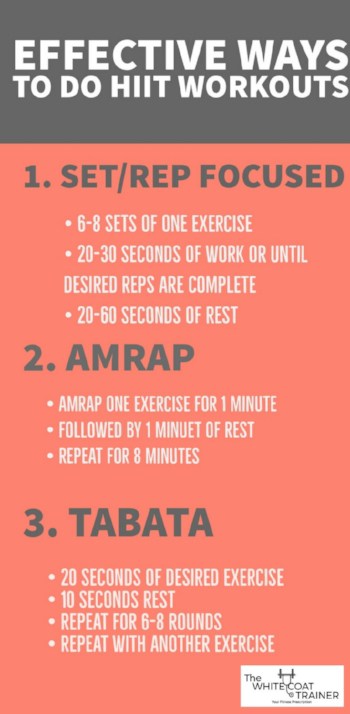
The Best Types of Exercise for Weight Loss and Toning
Written: Editor | July 27, 2023

Cardiovascular Exercises
Benefits of cardiovascular exercises for weight loss
When it comes to weight loss, incorporating cardiovascular exercises into your routine can be highly effective. These exercises, also known as cardio, help burn calories, increase metabolism, and promote overall fat loss. Here are some key benefits of cardiovascular exercises for weight loss:
-
Burns calories: Cardio exercises are great calorie burners. They increase your heart rate and force your body to utilize stored fat for energy. This calorie-burning effect continues even after you finish your workout, as your body works to restore its normal state.
-
Boosts metabolism: Regular cardio exercises can help increase your metabolic rate. This means your body becomes more efficient at burning calories throughout the day, even when you're not exercising. With a higher metabolism, you'll be able to achieve your weight loss goals more effectively.
-
Promotes fat loss: Cardio exercises target stubborn body fat, especially in the abdominal area. By engaging large muscle groups and elevating your heart rate, you'll burn excess fat and improve your body composition over time.
Types of cardiovascular exercises to consider
There are various types of cardiovascular exercises that you can incorporate into your weight loss journey. Here are some popular options:
-
Jogging or running: Jogging or running is a great way to get your heart rate up and burn calories. You can start with shorter distances or intervals and gradually increase your stamina and speed.
-
Cycling: Whether you prefer outdoor cycling or using a stationary bike, cycling is a low-impact cardio exercise that targets your leg muscles and helps burn calories effectively.
-
Swimming: Swimming is a full-body workout that is gentle on the joints. It not only burns calories but also helps tone muscles and improve overall cardiovascular fitness.
-
High-intensity interval training (HIIT): HIIT workouts involve short bursts of intense exercise followed by periods of rest or low-intensity exercise. This type of exercise can maximize calorie burn and increase cardiovascular fitness in a shorter amount of time.
How to incorporate cardio into your routine effectively
To make the most out of your cardio workouts for weight loss, consider the following tips:
-
Start slowly: If you're new to cardio exercises, start with shorter durations or lower intensities and gradually progress over time. Listen to your body and avoid overexertion or pushing yourself too hard.
-
Vary your workouts: Incorporate different types of cardio exercises to keep things interesting and prevent boredom. This also helps target different muscle groups and prevents overuse injuries.
-
Set realistic goals: Determine the frequency, duration, and intensity of your cardio workouts based on your fitness level and availability. Set achievable goals that align with your weight loss objectives.
-
Mix cardio with strength training: Combining cardio exercises with strength training can enhance weight loss results by building lean muscle mass and increasing overall calorie burn.
Remember, consistency is key when it comes to cardiovascular exercises for weight loss. Aim for at least 150 minutes of moderate-intensity cardio exercises per week, or 75 minutes of vigorous-intensity exercises, to reap the maximum benefits and achieve your weight loss goals.

Strength Training Exercises
Weight loss is a common goal for many individuals, and finding the best type of exercise to achieve this goal can be overwhelming. While there are several options available, one type of exercise that stands out for weight loss is strength training.
Benefits of strength training for weight loss
Strength training involves working against resistance to build muscle strength, endurance, and size. The benefits of incorporating strength training into your weight loss journey are numerous:
-
Increased metabolism: Muscle is more metabolically active than fat, meaning it burns more calories at rest. By increasing your muscle mass through strength training, you can boost your metabolism and burn more calories throughout the day.
-
Fat burning: Strength training not only helps preserve lean muscle mass but also promotes fat burning. During strength training exercises, your body uses stored fat as an energy source, leading to greater fat loss.
-
Toning and reshaping: Strength training can help sculpt and reshape your body by targeting specific muscle groups. As you lose fat, strength training exercises can help define and tone your muscles, giving you a more aesthetically pleasing physique.
-
Improved overall health: Strength training has numerous health benefits beyond weight loss. It can help improve bone density, reduce the risk of injury, enhance joint stability, and boost overall strength and endurance.
Different types of strength training exercises to try
There are various types of strength training exercises that can be incorporated into your weight loss routine. These exercises target different muscle groups and offer a range of benefits. Some popular options include:
- Weightlifting: Using free weights or weight machines to perform exercises such as squats, deadlifts, and bench presses.
- Bodyweight exercises: Using your own body weight to challenge your muscles, such as push-ups, squats, and lunges.
- Resistance band workouts: Utilizing elastic bands that provide resistance to perform exercises like bicep curls, lateral raises, and rows.
- Pilates: A low-impact form of strength training that focuses on core stability, flexibility, and overall body strength.
- Yoga: Combining strength, flexibility, and balance through various poses and movements.
Tips for building a strength training routine for weight loss
If you are new to strength training or looking to create an effective routine for weight loss, here are some tips to consider:
-
Start with the basics: Begin with compound exercises that target multiple muscle groups simultaneously, such as squats, lunges, and deadlifts.
-
Incorporate all major muscle groups: Ensure that your routine includes exercises for the upper body, lower body, and core to achieve balanced strength development.
-
Progress gradually: Start with lighter weights or lower intensity exercises and gradually increase the resistance or difficulty level as you gain strength and endurance.
-
Include both strength and cardiovascular training: While strength training is effective for weight loss, combining it with cardio exercises like running, swimming, or cycling can further enhance calorie burn and overall fitness.
-
Seek professional guidance: If you are unsure about proper form or technique, consider working with a certified personal trainer or fitness instructor to ensure you perform exercises correctly and avoid injuries.
In conclusion, strength training is an effective type of exercise for weight loss, offering numerous benefits such as increased metabolism, fat burning, toning, and improved overall health. By incorporating different types of strength training exercises and following a well-rounded routine, you can achieve your weight loss goals while improving strength and fitness.

High-Intensity Interval Training (HIIT)
When it comes to weight loss, finding the right type of exercise can make a significant difference. One popular and highly effective option is High-Intensity Interval Training (HIIT). This type of workout involves short bursts of intense exercise followed by brief periods of rest or low-intensity activity. Not only does it offer a time-efficient approach, but it also provides various health benefits, including weight loss.
Explanation of HIIT and its effectiveness for weight loss
HIIT works by pushing your body to its limits and then allowing it to recover before repeating the cycle. This intense style of workout triggers the afterburn effect, also known as excess post-exercise oxygen consumption (EPOC). It means your body continues to burn calories even after you've finished exercising. This can result in increased fat burning and overall weight loss.
The effectiveness of HIIT for weight loss is backed by scientific research. In a study published in the Journal of Obesity, researchers found that HIIT produced more significant reductions in body fat and waist circumference compared to moderate-intensity continuous exercise. Additionally, HIIT has been shown to improve insulin sensitivity, cardiovascular health, and metabolic function.
Examples of HIIT exercises to include in your routine
There are several different HIIT exercises you can incorporate into your routine. The key is to alternate between intense exercise and short rest intervals. Here are a few examples:
-
Sprint Intervals: Head outdoors or hop on a treadmill and alternate between sprinting for 30-60 seconds and walking or jogging for 1-2 minutes.
-
Burpees: Start in a standing position, then drop into a push-up position, complete a push-up, jump back up, and perform a vertical jump with arms overhead. Repeat in quick succession for a set period.
-
Jumping Jacks: Begin by standing with your feet together and arms by your sides. Jump while spreading your legs and raising your arms overhead. Jump again to return to the starting position. Continue for a set time.
Important considerations and safety tips for HIIT workouts
While HIIT can be highly effective, it's essential to consider a few important factors to ensure your safety and maximize results:
-
Start gradually: If you're new to exercise or have any health concerns, it's wise to start slowly and build up intensity and duration over time.
-
Warm-up properly: Prior to starting your HIIT workout, spend a few minutes engaging in dynamic stretches or light cardio to warm up your muscles and prepare your body.
-
Listen to your body: Pay attention to any signs of discomfort or pain during your HIIT workout. If something feels off, take a break, and consult with a healthcare professional if needed.
-
Stay hydrated: It's crucial to drink enough water before, during, and after your workouts, especially during intense exercise sessions like HIIT.
-
Incorporate proper nutrition: To support your weight loss goals and fuel your HIIT workouts, ensure you're consuming a well-balanced diet with adequate protein, carbohydrates, and healthy fats.
By incorporating HIIT exercises into your fitness routine and following these safety guidelines, you can make substantial progress towards your weight loss goals while enjoying the added benefits of improved cardiovascular health and overall fitness. So lace up your sneakers, find a HIIT workout that suits your preferences, and get ready to start shedding those pounds!

Conclusion
Summary of the best types of exercise for weight loss
When it comes to weight loss, incorporating a combination of cardiovascular exercise and strength training is essential. Cardio exercises like running, cycling, swimming, and dancing help burn calories and improve cardiovascular health. Strength training exercises such as weightlifting, resistance band workouts, and bodyweight exercises help build lean muscle, increase metabolism, and promote fat loss. High-intensity interval training (HIIT) is a popular and effective way to combine both cardio and strength training into a single workout. It involves alternating between short bursts of intense exercise and brief recovery periods.
Additional resources and advice for creating an effective weight loss exercise plan
To create an effective weight loss exercise plan, it's important to consider a few key factors. Firstly, make sure to choose activities that you enjoy, as this will increase your chances of sticking to a regular exercise routine. Secondly, gradually increase the intensity and duration of your workouts over time to continue challenging your body. Additionally, consider incorporating other lifestyle changes such as a healthy diet, plenty of sleep, and stress management techniques to support your weight loss goals.
If you need further guidance, consulting with a certified personal trainer or fitness professional can be helpful. They can provide personalized exercise recommendations and create a tailored plan based on your specific needs and goals. Remember to listen to your body and make adjustments as needed, especially if you have any underlying health conditions or injuries.
Frequently Asked Questions about exercise and weight loss
Q: How often should I exercise for weight loss?
A: Aim for at least 150 minutes of moderate-intensity cardio exercise or 75 minutes of vigorous-intensity cardio exercise per week, along with two or more strength training sessions.
Q: Can I lose weight by doing only cardio exercises?
A: While cardio exercises are great for calorie burning, incorporating strength training is important to build lean muscle, increase metabolism, and achieve long-term weight loss.
Q: How long will it take to see results from exercise for weight loss?A: The timeline varies for each individual, but with consistent exercise and healthy habits, you can start noticing improvements in your fitness level and weight within a few weeks.
Q: Can I spot reduce fat in specific areas?A: Spot reduction is not possible. When you lose weight, it is a result of overall body fat loss, which occurs gradually and cannot be targeted to specific areas.
Q: Is it necessary to join a gym for weight loss?A: Joining a gym is not necessary for weight loss. You can engage in various physical activities like walking, jogging, hiking, or even dancing at home to achieve your weight loss



